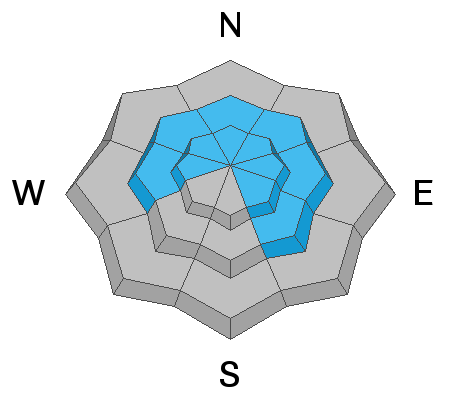Forecast for the Provo Area Mountains

Issued by Trent Meisenheimer on
Tuesday morning, January 29, 2019
Tuesday morning, January 29, 2019
The avalanche danger is MODERATE for triggering a large, deep avalanche in isolated places at the mid & upper elevation west through southeast facing terrain. It's the classic low-probability of triggering a high-consequence avalanche. The danger is also MODERATE for triggering wind drifts at all upper elevations. For today, continue to identify and avoid any of the rounded, smooth or scalloped drifts on steep slopes.

Low
Moderate
Considerable
High
Extreme
Learn how to read the forecast here








